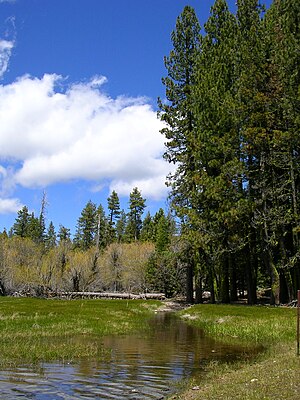Were the First "Bucket Biologists" Native Americans?

Image via Wikipedia
Anyone who follows invasive species migration and transportation issues will be familiar with the term ‘bucket biologist.’ In simple terms, it refers to a person — sometimes well-meaning and often unaware — who transports fish from one location where the fish are “native” to another location where they’ve been absent. The result, well-known among endangered species scientists, is that the introduced fish can wreak havoc on the local ecological balance.
It’s not a stretch of the imagination to think that humans have been “improving” local fish populations for eons. That’s why a factoid from Redding.com’s Dottie Smith blog about the origin of fish in California’s Manzanita Lake caught my eye this morning. Apparently a claim made in 1848 by a certain Pierson B. Reading — a trapper, miner, and original settler in Redding — was countered by Shavehead, Chief of the Hat Creek Indians, [who] said he was the first man to see Manzanita Lake and that he and his Indians brought trout from Hat Creek and planted them in the lake. Before that, there had been no fish in Manzanita Lake.”
Stuart Udall, Wilderness Act Sponsor, Dies
YouTube Video Sinks River Driver
![Reblog this post [with Zemanta]](http://img.zemanta.com/reblog_e.png?x-id=e71c6aaf-5ecd-4389-ab6f-e94eb08c9d12)











